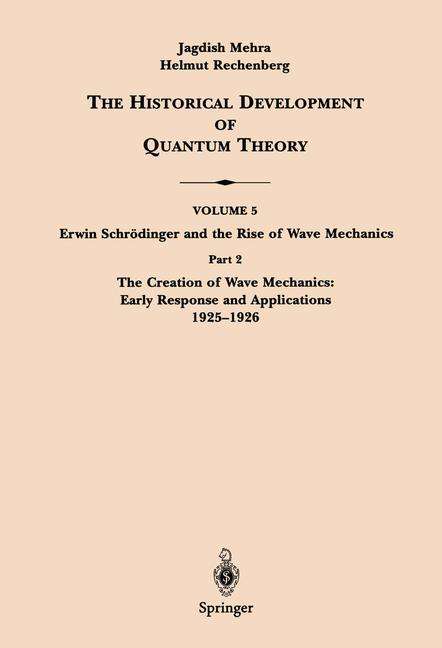Erwin Schrödinger: Part 2 The Creation of Wave Mechanics; Early Response and Applications 1925-1926, Kartoniert / Broschiert
Part 2 The Creation of Wave Mechanics; Early Response and Applications 1925-1926
(soweit verfügbar beim Lieferanten)
- Verlag:
- Springer New York, 12/2000
- Einband:
- Kartoniert / Broschiert, Paperback
- Sprache:
- Englisch
- ISBN-13:
- 9780387951805
- Artikelnummer:
- 4046361
- Umfang:
- 628 Seiten
- Nummer der Auflage:
- 00001
- Ausgabe:
- 1st edition 1987. 1st softcover printing 2000
- Copyright-Jahr:
- 2001
- Gewicht:
- 866 g
- Maße:
- 235 x 155 mm
- Stärke:
- 33 mm
- Erscheinungstermin:
- 28.12.2000
- Hinweis
-
Achtung: Artikel ist nicht in deutscher Sprache!
Klappentext
Quantum Theory, together with the principles of special and general relativity, constitute a scientific revolution that has profoundly influenced the way in which we think about the universe and the fundamental forces that govern it. The Historical Development of Quantum Theory is a definitive historical study of that scientific work and the human struggles that accompanied it from the beginning. Drawing upon such materials as the resources of the Archives for the History of Quantum Physics, the Niels Bohr Archives, and the archives and scientific correspondence of the principal quantum physicists, as well as Jagdish Mehra's personal discussions over many years with most of the architects of quantum theory, the authors have written a rigorous scientific history of quantum theory in a deeply human context. This multivolume work presents a rich account of an intellectual triumph: a unique analysis of the creative scientific process. The Historical Development of Quantum Theory is science, history, and biography, all wrapped in the story of a great human enterprise. Its lessons will be an aid to those working in the sciences and humanities alike.
Biografie
Erwin Schrödinger, geboren 1887 in Wien, gestorben 1964 ebenda, gehörte zur Elite der Physiker des 20. Jahrhunderts. Mit der Entdeckung der nach ihm benannten Wellengleichung hat er wesentlich zur Entwicklung der gesamten Atomphysik beigetragen. Bahnbrechend waren auch seine Leistungen auf den Gebieten der Farbenlehre, der Thermodynamik, der statischen Mechanik und der Relativitätstheorie. 1933 erhielt er den Nobelpreis für Physik. 1938 musste er mit seiner Frau endgültig ins Exil gehen. Wenige Jahre vor seinem Tod kehrte er nach Österreich zurück.

